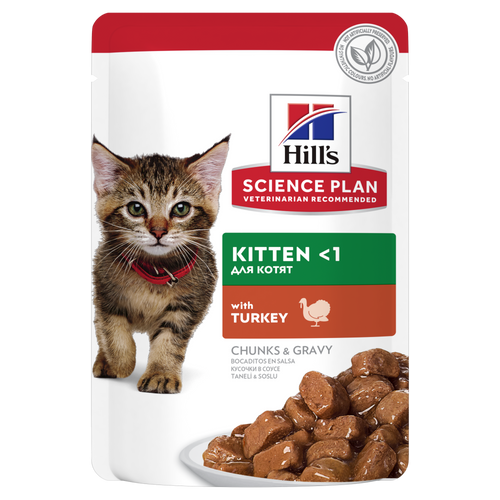
-
Encuentra el alimento adecuado para tu mascotaResponde este cuestionario para ver qué comida es mejor para tu amigo peludo.Encuentra el alimento adecuado para tu mascotaResponde este cuestionario para ver qué comida es mejor para tu amigo peludo.Etapa de la Vida
-
Cachorro
2 - 12 Meses
-
Adulto
1 - 6 Años
-
Mayor
7 - 11 Años
-
Sénior (+11 años)
+ 11 Años
Productos Destacados alimento para perros adultos de razas pequeñas y mini
alimento para perros adultos de razas pequeñas y miniEl alimento Hill's Science Plan para perros adultos de razas pequeñas y mini con cordero y arroz es un alimento completo, especialmente formulado con la tecnología ActivBiome+ Multi-Benefit.
Nutrición adaptada a las necesidades únicas de los perros pequeños durante el mejor momento de su vida.Comprar ahora Light alimento para perros mayores de razas medianas
Light alimento para perros mayores de razas medianasHill's Science Plan Light alimento para perros mayores de razas medianas con pollo es un alimento completo especialmente formulado con la tecnología ActivBiome+ Multi-Benefit.
Ayuda a mantener a tu perro en forma y activo con nuestro delicioso alimento bajo en calorías.
Nutrición precisa para perros mayores menos activos que necesitan un alimento bajo en calorías que les ayude a mantener un peso y un estilo de vida saludables.Comprar ahora alimento para perros adultos
alimento para perros adultosHill's Science Plan alimento húmedo para perros adultos con vacuno es un alimento completo de alta calidad para perros a partir de 1 año de edad. Este paté deliciosamente suave de vacuno está formulado para aportar la cantidad adecuada de energía para cumplir con las necesidades de los perros adultos.
Comprar ahoraProductos Destacados alimento para gatitos
alimento para gatitosTrocitos en salsa para gatitos, con omega-3 para un desarrollo saludable del cerebro y la visión y proteína de alta calidad para favorecer el crecimiento muscular. Con minerales equilibrados para promover unos huesos y dientes fuertes.
Comprar ahora alimento para gatitos
alimento para gatitosNutrición cuidadosamente equilibrada con delicioso pavo para favorecer la inmunidad y el crecimiento saludable en los gatitos
Comprar ahora alimento para gatos adultos
alimento para gatos adultosHill's Science Plan alimento para gatos adultos con pollo es un alimento completo especialmente formulado con la tecnología ActivBiome+ Multi-Benefit.
Este alimento ha sido especialmente formulado para cubrir las necesidades energéticas de los gatos en el mejor momento de su vida.Comprar ahora -
Cachorro
-
Perro
- Artículos y Consejos para Perros
-
Necesidades Específicas en Perros
- Control de Peso
- Sensibilidades Alimentarias y de la Piel
- Cuidado Urinario
- Cuidado Digestivo
- Cuidado Articular
- Cuidado Renal
- Recuperación
- Cuidado Dental
-
Etapa de la Vida en Perros
- Nutrición para Cachorros
- Nutrición para Perros Adultos
- Nutrición para Perros Mayores
Gato- Artículos y Consejos para Gatos
-
Necesidades Específicas en Gatos
- Control de Peso
- Sensibilidades Alimentarias y de la Piel
- Cuidado Urinario
- Cuidado Digestivo
- Cuidado Renal
- Bolas de pelo
- Recuperación
- Cuidado Dental
- Estrés
-
Etapa de la Vida en Gatos
- Nutrición para Gatitos
- Nutrición para Gatos Adultos
- Nutrición para Gatos Mayores
Artículos Destacados Mímalo con alimentos húmedos: una excelente opción para mascotas con necesidades específicas
Mímalo con alimentos húmedos: una excelente opción para mascotas con necesidades específicasMímalo con alimentos húmedos: una excelente opción para mascotas con necesidades específicas
Leer más Proteínas
ProteínasA menudo se habla de las proteínas como la columna dorsal de las células, debido al papel estructural que desempeñan en todas las paredes celulares. Las proteínas son necesarias para todos los procesos de crecimiento y reparación tisular.
Leer más Todo lo que debes saber sobre el microbioma de tu mascota
Todo lo que debes saber sobre el microbioma de tu mascotaDescubre qué es el microbioma, cómo afecta a la salud intestinal y global de tu mascota y por qué es importante la alimentación para mantener sano el microbioma.
Leer más -

 Nutrición de base científica que genera resultados en los que puedes confiar
Nutrición de base científica que genera resultados en los que puedes confiar




Consejos sabrosos
Los gatitos pueden necesitar varias visitas de vacunación durante su primer año. Los gatos adultos suelen beneficiarse de revisiones anuales, mientras que los gatos mayores o con necesidades especiales podrían necesitar visitas más frecuentes.


Uno de nuestros autores preparó este artículo para usted.
Productos relacionados

Trocitos en salsa para gatitos, con omega-3 para un desarrollo saludable del cerebro y la visión y proteína de alta calidad para favorecer el crecimiento muscular. Con minerales equilibrados para promover unos huesos y dientes fuertes.

Nutrición cuidadosamente equilibrada con delicioso pavo para favorecer la inmunidad y el crecimiento saludable en los gatitos

Hill's Science Plan alimento para gatos adultos con pollo es un alimento completo especialmente formulado con la tecnología ActivBiome+ Multi-Benefit.
Este alimento ha sido especialmente formulado para cubrir las necesidades energéticas de los gatos en el mejor momento de su vida.

Hill's Science Plan Sterilised Cat alimento seco para gatos adultos con pato está especialmente formulado con la tecnología ActivBiome+ Multi-Benefit. Es una nutrición equilibrada y precisa, adaptada a las necesidades de los gatos esterilizados, para ayudarles a mantenerse delgados y sanos.
Artículos relacionados

Cuando adoptas un gato, no solo ganas un mejor amigo, sino que también salvas una vida. Por eso es tan importante adoptar un gato de una protectora local.

Descubre la guía definitiva para dar a tu gatito el mejor comienzo en la vida. Para más consejos de expertos sobre el cuidado de gatitos y gatos, visita Hill's Pet España.

Descubre el mejor momento para realizar la transición hacia los alimentos sólidos para que tu gatito pueda crecer y desarrollarse de forma saludable. Visita Hill's Pet España para más información y consejos de expertos sobre gatitos.

Al igual que las personas, los gatos pueden sufrir molestias digestivas ocasionales. Si tu gato presenta alguno de los siguientes síntomas, sobre todo después de comer, es posible que tenga el estómago sensible.

Pon a tu gato a dieta sin que lo sepa
Nuestra fórmula baja en calorías te ayuda a controlar el peso de tu gato. Es rica en proteínas de alta calidad para ayudar a desarrollar la masa muscular y está elaborada con ingredientes específicos para una comida nutritiva y deliciosa. Los antioxidantes clínicamente probados, como la vitamina C y la vitamina E, ayudan a promover un sistema inmunitario sano.
Pon a tu gato a dieta sin que lo sepa
Nuestra fórmula baja en calorías te ayuda a controlar el peso de tu gato. Es rica en proteínas de alta calidad para ayudar a desarrollar la masa muscular y está elaborada con ingredientes específicos para una comida nutritiva y deliciosa. Los antioxidantes clínicamente probados, como la vitamina C y la vitamina E, ayudan a promover un sistema inmunitario sano.